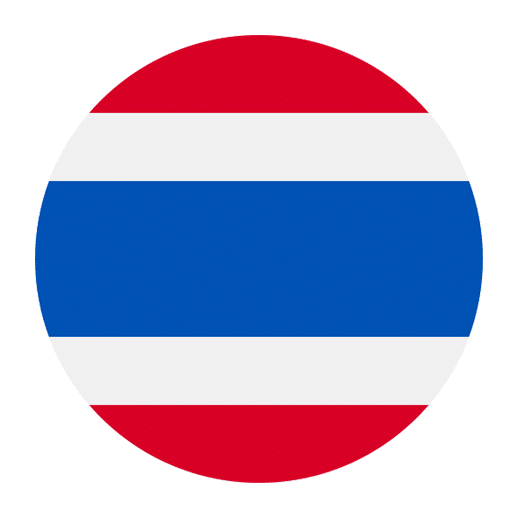Learning a new language involves diving into the rich cultural tapestry that it represents. For many, the journey to mastering Thai includes an exploration of its culinary delights. Thai cuisine is renowned for its vibrant flavors, fragrant aromas, and the intricate balance of sweet, sour, salty, and spicy elements. Understanding the vocabulary for different cooking ingredients can enhance your culinary experience and deepen your connection to the Thai language and culture. This article will guide you through essential Thai vocabulary for various cooking ingredients.
Basic Ingredients
Rice
Rice is a staple in Thai cuisine, and knowing the different types of rice and their uses is essential. The Thai word for rice is ข้าว (kâao). Here are some common types:
1. ข้าวสวย (kâao sŭay) – Steamed rice
2. ข้าวเหนียว (kâao nĭao) – Sticky rice
3. ข้าวกล้อง (kâao glông) – Brown rice
4. ข้าวมัน (kâao man) – Coconut rice
Noodles
Noodles are another fundamental component of Thai cooking. The word for noodles in Thai is เส้น (sên). Familiarize yourself with these varieties:
1. เส้นเล็ก (sên lék) – Thin rice noodles
2. เส้นใหญ่ (sên yài) – Wide rice noodles
3. วุ้นเส้น (wún sên) – Glass noodles
4. บะหมี่ (bà-mìi) – Egg noodles
Vegetables
Thai cuisine makes extensive use of fresh vegetables, each bringing its unique flavor and texture to the dish. Here are some common vegetables you might encounter:
1. ผัก (pàk) – Vegetables
2. กะหล่ำปลี (gà-làm bplii) – Cabbage
3. ถั่วฝักยาว (tùa fàk yaao) – Long beans
4. มะเขือเทศ (má-kĕua tâyt) – Tomato
5. ผักชี (pàk-chii) – Coriander
6. ใบกะเพรา (bai gà-práo) – Holy basil
7. ใบโหระพา (bai hŏ-rà-paa) – Sweet basil
8. ผักคะน้า (pàk ká-náa) – Chinese kale
Herbs and Spices
Herbs and spices are the soul of Thai cooking, creating the distinctive flavors that make Thai food so beloved.
1. เครื่องเทศ (krêuang-tâyt) – Spices
2. ข่า (kàa) – Galangal
3. ตะไคร้ (dtà-krái) – Lemongrass
4. ใบมะกรูด (bai má-gròot) – Kaffir lime leaves
5. พริก (prík) – Chili
6. พริกไทย (prík tai) – Black pepper
7. กระเทียม (grà-tiiam) – Garlic
8. หอมแดง (hŏm daeng) – Shallot
9. ผักชีฝรั่ง (pàk chii fà-ràng) – Cilantro
10. รากผักชี (ráak pàk chii) – Coriander root
Fruits
Thailand is a tropical paradise with a wide array of fruits. Some are commonly used in cooking, while others are enjoyed fresh.
1. ผลไม้ (pŏn-lá-mái) – Fruits
2. มะม่วง (má-mûang) – Mango
3. มะละกอ (má-lá-gaw) – Papaya
4. กล้วย (glûay) – Banana
5. สับปะรด (sàp-bpà-rót) – Pineapple
6. ทุเรียน (tú-rian) – Durian
7. มังคุด (máng-kút) – Mangosteen
8. ลิ้นจี่ (lín-jìi) – Lychee
Meat and Seafood
Protein sources in Thai cuisine are diverse, ranging from meats to seafood, each contributing to the richness of Thai dishes.
1. เนื้อสัตว์ (núea sàt) – Meat
2. ไก่ (gài) – Chicken
3. หมู (mŭu) – Pork
4. เนื้อวัว (núea wua) – Beef
5. กุ้ง (gûng) – Shrimp
6. ปลา (bplaa) – Fish
7. ปลาหมึก (bplaa mèuk) – Squid
8. หอย (hŏi) – Shellfish
Condiments and Sauces
Condiments and sauces are crucial in Thai cooking, often used to adjust the flavor to the perfect balance.
1. เครื่องปรุง (krêuang bprung) – Condiments
2. น้ำปลา (náam bplaa) – Fish sauce
3. น้ำตาล (náam dtaan) – Sugar
4. น้ำมะนาว (náam má-naao) – Lime juice
5. ซอสถั่วเหลือง (sôt tùa lĕuang) – Soy sauce
6. ซีอิ๊วขาว (sii-íw kăao) – Light soy sauce
7. ซีอิ๊วดำ (sii-íw dam) – Dark soy sauce
8. ซอสหอยนางรม (sôt hŏi naang rom) – Oyster sauce
9. น้ำพริก (náam prík) – Chili paste
10. กะปิ (gà-bpì) – Shrimp paste
Dairy and Eggs
While dairy is not as prevalent in Thai cooking as in some other cuisines, it does appear, particularly in desserts and certain dishes.
1. นม (nom) – Milk
2. นมข้นหวาน (nom kôn wăan) – Condensed milk
3. กะทิ (gà-tí) – Coconut milk
4. ไข่ (kài) – Egg
5. ไข่ไก่ (kài gài) – Chicken egg
6. ไข่เป็ด (kài bpèt) – Duck egg
Preparation and Cooking Methods
Understanding cooking methods is as essential as knowing the ingredients. Here are some common Thai cooking methods and terms:
1. ทอด (tâwt) – Fry
2. ผัด (pàt) – Stir-fry
3. ต้ม (dtôm) – Boil
4. ย่าง (yâang) – Grill
5. นึ่ง (nûeng) – Steam
6. ตำ (dtam) – Pound (as in papaya salad)
7. แกง (gaeng) – Curry
8. ยำ (yam) – Salad (often spicy and tangy)
Common Phrases and Usage
Here are some useful phrases that incorporate the vocabulary you’ve learned:
1. ผม/ฉันต้องการซื้อข้าวสวย (pŏm/chăn dtông gaan súe kâao sŭay) – I want to buy steamed rice.
2. คุณมีใบกะเพราสดไหม? (kun mee bai gà-práo sòt măi?) – Do you have fresh holy basil?
3. ฉันชอบผัดไทยกับกุ้ง (chăn chôrp pàt tai gàp gûng) – I like Pad Thai with shrimp.
4. คุณใช้เครื่องเทศอะไรในการทำแกงเขียวหวาน? (kun chái krêuang-tâyt à-rai nai gaan tam gaeng kĭeow wăan?) – What spices do you use in making green curry?
Conclusion
Mastering Thai vocabulary for different cooking ingredients not only enhances your ability to cook authentic Thai dishes but also deepens your appreciation for the culture. By understanding the names and uses of various ingredients, you can navigate Thai markets with confidence and bring a taste of Thailand into your kitchen. Practice these words regularly, and soon you’ll find yourself more comfortable and fluent in both the language and the culinary arts of Thailand. Enjoy your culinary adventure, and happy cooking!

